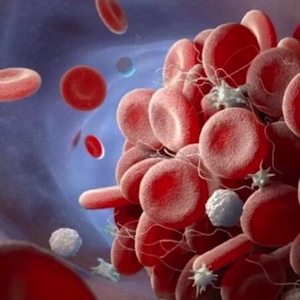Narrative Reviews
Vol. 4 No. 3 (2025)
The key to fibrinolysis and thrombolysis

Publisher's note
All claims expressed in this article are solely those of the authors and do not necessarily represent those of their affiliated organizations, or those of the publisher, the editors and the reviewers. Any product that may be evaluated in this article or claim that may be made by its manufacturer is not guaranteed or endorsed by the publisher.
All claims expressed in this article are solely those of the authors and do not necessarily represent those of their affiliated organizations, or those of the publisher, the editors and the reviewers. Any product that may be evaluated in this article or claim that may be made by its manufacturer is not guaranteed or endorsed by the publisher.
Published: 9 September 2025
352
Views
82
Downloads
48
HTML
Similar Articles
- PO20 | Impact of endovascular treatment on functional outcome in ischemic stroke: a real-world retrospective study , Bleeding, Thrombosis and Vascular Biology: Vol. 4 No. s1 (2025)
- PO66 | Viscoelastic tests in disseminated intravascular coagulation associated with aortic aneurysm , Bleeding, Thrombosis and Vascular Biology: Vol. 4 No. s1 (2025)
- CO14 | Inflammation and fibrinolysis biomarkers as predictors of cancer risk in healthy subjects: results from the hypercan study , Bleeding, Thrombosis and Vascular Biology: Vol. 4 No. s1 (2025)
- CS04 | Association between elevated plasma levels of tissue plasminogen activator and occult cancer risk: a nested case-cohort analysis in 10,294 healthy subjects , Bleeding, Thrombosis and Vascular Biology: Vol. 4 No. s1 (2025)
- PO10 | Clinical and laboratory features of long-Covid syndrome: a cross-sectional study of 1,337 Covid-19 survivors , Bleeding, Thrombosis and Vascular Biology: Vol. 4 No. s1 (2025)
- PO68 | Whole blood hypercoagulable profiles in a patient with markedly elevated lipoprotein(A) plasma levels and thrombotic complications: a case report , Bleeding, Thrombosis and Vascular Biology: Vol. 4 No. s1 (2025)
- Alice Lipari, Esmeralda Capristo, Antonietta Ferretti, Erica De Candia, Anticoagulation in obese patients: challenges and strategies , Bleeding, Thrombosis and Vascular Biology: Vol. 4 No. 3 (2025)
- CO48 | Gynecological involvement in females with congenital plasminogen deficiency type 1 , Bleeding, Thrombosis and Vascular Biology: Vol. 4 No. s1 (2025)
- Sergio Coccheri, A re-appraisal of thrombogenesis in COVID-19, seen as a multiple "Complex system" , Bleeding, Thrombosis and Vascular Biology: Vol. 1 No. 3 (2022)
- Francesca Santilli, Paola Simeone, Rossella Liani, Inflammation, platelets and diabetes , Bleeding, Thrombosis and Vascular Biology: Vol. 2 No. 2 (2023)
1-10 of 73
Next
You may also start an advanced similarity search for this article.








